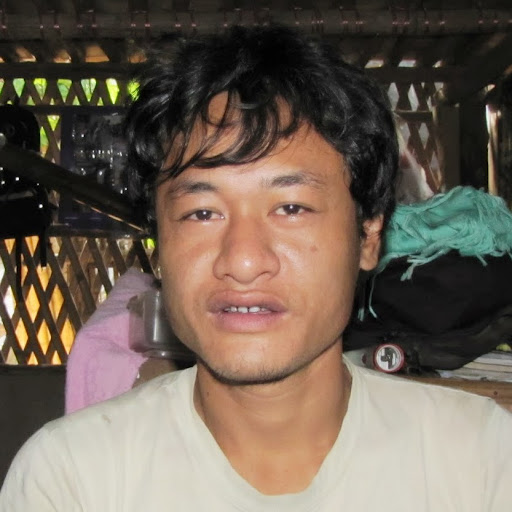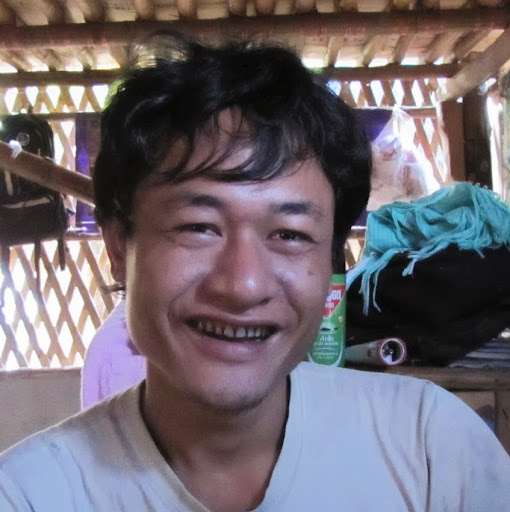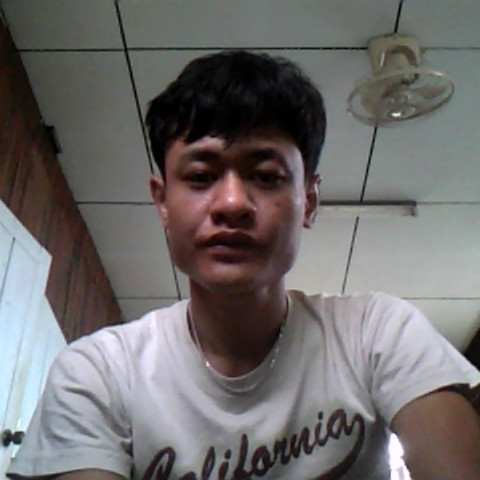Joseph S Shu
age ~70
from Lancaster, CA
- Also known as:
-
- Joseph Shoupyng Shu
- Joseph H Shu
- Joseph Shoupyn Shu
- Joseph Shou Pyng Shu
- Joseph Shoupyn Ml Shushou
- Shou P Shu
- Joseph Shou
- Pyng Shu Shou
Joseph Shu Phones & Addresses
- Lancaster, CA
- White Plains, NY
- Rosamond, CA
- 5988 Rainbow Dr, San Jose, CA 95129 • 4082553731
- Cupertino, CA
- Rye Brook, NY
- Saratoga, CA
- Santa Clara, CA
- Los Angeles, CA
- 977 S Jackson Ave, San Jose, CA 95116
Work
-
Position:Professional/Technical
Education
-
Degree:Graduate or professional degree
Us Patents
-
Color Image Reproduction With Accurate Inside-Gamut Colors And Enhanced Outside-Gamut Colors
view source -
US Patent:6400843, Jun 4, 2002
-
Filed:Apr 22, 1999
-
Appl. No.:09/296891
-
Inventors:Joseph Shu - San Jose CA
Hakan Ancin - Sunnyvale CA
Anoop Bhattacharjya - Sunnyvale CA -
Assignee:Seiko Epson Corporation - Tokyo
-
International Classification:G06K 900
-
US Classification:382167, 345590, 358518
-
Abstract:A color image reproduction system achieves higher-quality color reproduction by improving the utilization of colors within the gamut of an output device that are not in the gamut of an input device. This is accomplished by a device-dependent compensation transformation that maps a second set of colors in both the gamut of an input device and the gamut of the output device into a first set of colors in the gamut of the output device but not in the gamut of the input device. The compensation transformation may be derived in a number of ways that entail identifying the first and second sets of colors and then determining one or more scaling factors that map the second set of colors into a union of the first and second sets of colors.
-
Self-Calibration Of Network Copier System
view source -
US Patent:6404511, Jun 11, 2002
-
Filed:Dec 11, 1998
-
Appl. No.:09/209904
-
Inventors:Joseph Shu - San Jose CA
-
Assignee:Seiko Epson Corporation - Tokyo
-
International Classification:H04N 146
-
US Classification:358 19, 358504, 358523
-
Abstract:A technique for calibrating non-reference printers to a reference printer in a network system by determining a set of four 1-D look-up tables for each non-reference printer. Each set of four 1-D look-up tables is constructed from a corresponding set of transfer functions, where each transfer function in a given set is a composite of a 1-D characteristic function for a particular primary color of the reference printer and a 1-D inverse characteristic function for that particular primary color of the corresponding non-reference printer. The characteristic functions are determined by performing a specific color space transformation analysis on each non-reference printer and on the reference printer.
-
Out-Of-Gamut Color Mapping Strategy
view source -
US Patent:6421142, Jul 16, 2002
-
Filed:Jan 7, 1999
-
Appl. No.:09/226843
-
Inventors:Joseph Shu - San Jose CA
-
Assignee:Seiko Epson Corporation - Tokyo
-
International Classification:G06F 1500
-
US Classification:358 19, 358523
-
Abstract:A method and apparatus for improving color matching between original color images and reproductions thereof. Incorporated into the improved color matching technique is an improved out-of-gamut mapping strategy which does not affect in-gamut colors but which ensures that colors outside of the input device gamut will be mapped to the boundary of the output device gamut while preserving hue and minimizing the combined chrominance-luminance error.
-
Color Table Manipulations For Contour Reduction
view source -
US Patent:6522427, Feb 18, 2003
-
Filed:Sep 21, 1999
-
Appl. No.:09/400787
-
Inventors:Anoop Bhattacharjya - Sunnyvale CA
Joseph Shu - San Jose CA -
Assignee:Seiko Epson Corporation - Tokyo
-
International Classification:G06F 1500
-
US Classification:358 19, 358523, 382266
-
Abstract:An apparatus and method for improving a color space transformation between an input device such as a scanner and an output device such as a printer. The color space transformation includes a first three-dimensional look up table that receives color information from the input device and transforms colors specified in an input device color space into colors in a device-independent color space, and a second three-dimensional look up table that receives colors from the first three-dimensional look up table and transforms colors specified in a device-independent color space into colors in an output device color space. The method includes inputting sample images with the input device and outputting those sample images with the output device, identifying areas in the sample images output by the output device where contouring appears, forming a list of colors corresponding to the identified areas, identifying nodes in the second three-dimensional look up table encompassing the list of colors, and smoothing the set of nodes.
-
Smoothness Enhancement In Laser Printing Through Periodic Modulation Of Halftone Cell
view source -
US Patent:6633412, Oct 14, 2003
-
Filed:Mar 26, 1999
-
Appl. No.:09/277864
-
Inventors:Joseph Shu - San Jose CA
-
Assignee:Seiko Epson Corporation - Tokyo
-
International Classification:G06F 1500
-
US Classification:358 313, 358 314, 358 319, 358 326, 358533, 358534, 358535, 358536, 358 19
-
Abstract:When clustered-dot dithering is employed in laser printers a banding effect sometimes results from the interaction of the dither matrix with non-uniform line spacing in the printer. We have found that we can lessen the effect of this interaction if we change the dither matrix as it moves over the image. We do this by modulating the dither matrix (halftone cell) as a function of the spatial position of the sub-area in the image. Halftone cells can be formed in a variety of patterns (e. g. vertical, horizontal, etc. ) but generally their threshold values grow from a minimum value to a maximum value. Our process is to modulate the halftone cell according to a function: f (s, h) where s is the spatial position of the sub-area of the image and h is the halftone cell. We modulate the cell by altering the relative positions of the threshold values in the cell as we move the cell over the image. This effectively breaks up the bands of clusters of one size or another and provides a visually uniform image even in lighter tones.
-
Color Processing Architecture And Algorithms For Color Laser Printers
view source -
US Patent:6765695, Jul 20, 2004
-
Filed:Sep 12, 2001
-
Appl. No.:09/953699
-
Inventors:Joseph Shu - San Jose CA
-
Assignee:Seiko Epson Corporation - Tokyo
-
International Classification:G06K 1500
-
US Classification:358 19, 358515, 358 305, 358 313, 358 321, 358 323
-
Abstract:Color processing architecture and algorithms (CPAA) for color laser printers process and handle incoming RGB image data effectively to achieve high performance, high quality image printing with low memory requirements. CPAA supports a new data structure for faster raster operation processing (ROP) for color laser printers. The CPAA architecture advantageously improves the flow of data through the processing pipeline to provide high speed at higher resolutions, e. g. , at 600 and 1200 dpi. An advance quantizer using multilevel dithering flexibly reduces bits to support fast ROP and to enable fast conversion to CMYK data with only a simple look-up table (LUT) operation by a color matching module, while an adaptive filter maintains high image quality.
-
Three Dimensional Stochastic Screen For Lcd And Video
view source -
US Patent:6842184, Jan 11, 2005
-
Filed:Dec 3, 2002
-
Appl. No.:10/308554
-
Inventors:Jincheng Huang - Mountain View CA, US
Joseph Shu - San Jose CA, US -
Assignee:Seiko Epson Corporation - Tokyo
-
International Classification:G09G 502
-
US Classification:345596, 345643, 382237, 358 19
-
Abstract:A dither matrix generator defines a three-dimensional array of pixels referred to as the “cluster array” in which each pixel is designated based on its value as a “cluster pixel” or a “void pixel”. The dither matrix generator also defines a three-dimensional array referred to as the “dither matrix,” and assigns rank values to the dither matrix in two stages. In the first stage, the dither matrix generator identifies the largest cluster in the cluster array, identifies a cluster pixel located in the largest cluster, assigns a rank value to the element in the dither matrix corresponding to the cluster pixel and removes the cluster pixel from the cluster array. The process is repeated until the cluster array contains no cluster pixels. In the second stage, the dither matrix generator resets the pixels in the cluster array to their initial values, identifies the largest void in the cluster array, identifies a void pixel within the largest void, assigns a rank value to the element in the dither matrix corresponding to the void pixel and inserts a cluster pixel in the location of the void pixel. The process is repeated until the cluster array contains only cluster pixels.
-
Image Artifact Removal Technique For Lcp
view source -
US Patent:6879733, Apr 12, 2005
-
Filed:Jan 18, 2001
-
Appl. No.:09/766122
-
Inventors:Joseph Shu - San Jose CA, US
-
Assignee:Seiko Epson Corporation - Tokyo
-
International Classification:G06K009/40
-
US Classification:382275, 382261, 382264, 358 326
-
Abstract:A technique is provided that identifies screen and non-screen regions of a projected or displayed image to smooth and selectively remove moiré from the screen regions while maintaining sharpness in the non-screen regions. Each pixel in the image is classified as a screen or non-screen pixel and then pixels in a predetermined surrounding area of each pixel are examined to check the classification of that pixel. A low pass filter is applied to pixels in the image, such that, when the low pass filter is applied, a center of the low pass filter is selectively shifted relative to a current pixel based on the examination.
Resumes

Joseph Shu
view source
Joseph Shu
view source
Joseph Shu
view sourceLocation:
United States

Joseph Shu
view sourceName / Title
Company / Classification
Phones & Addresses
President
5L2F MINISTRY TO CHRIST
Religious Organization
Religious Organization
4521 Elmhurst Dr, San Jose, CA 95129
Youtube
Plaxo

Shu, Joseph
view sourceTaipei
Googleplus

Joseph Shu
Tagline:
Difficult to describe.

Joseph Shu

Joseph Shu

Joseph Shu

Joseph Shu

Joseph Shu

Joseph Atanga Shu
view source
Joseph Shu
view sourceGet Report for Joseph S Shu from Lancaster, CA, age ~70





